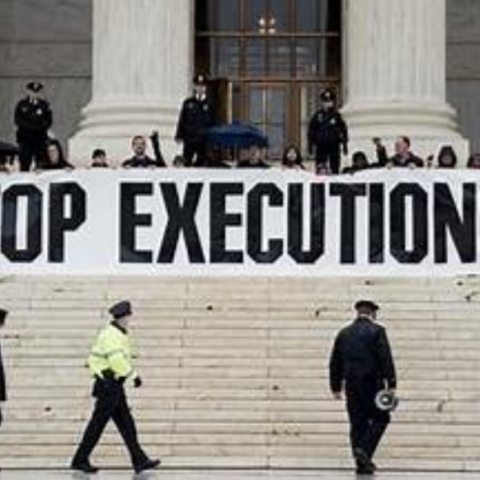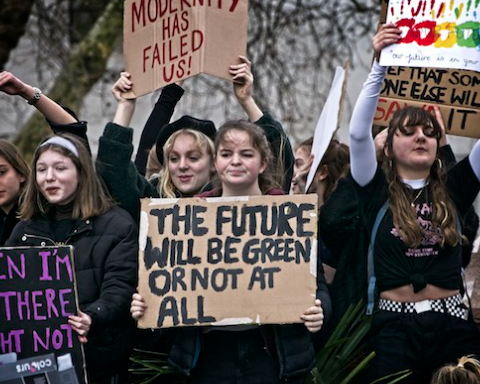By: Korey Boehm
Over the course of the last two weeks, new details have gradually emerged regarding the nature of the Boston Marathon bombings. As law enforcement officials have continued to investigate, an increasing amount of inaccuracies and exaggerations in the initial reports by the media have been revealed and contradicted. With more of the facts now finally at hand, one thing has become perfectly clear: The media places a far greater priority on being first as opposed to being right.
If five random people were asked to give an account of the recent Boston Marathon bombings, it is more than likely that they would offer five distinct versions of the events, each with their own inaccuracies and exaggerations depending on when they turned off the television. This is because an overwhelming amount of information in the preliminary media reports turned out to be false. The effects of this are only exacerbated as a result of the “telephone game” that ensues when corporate America meets at the water cooler and compares their inevitably differing stories.
Among the inaccuracies in the immediate aftermath of the bombing was the report by the Associated Press that cellphone service had been shut down in Boston as well as the New York Post’s erroneous claims that 12 fatalities had occurred as opposed to the actual 3 and that a Saudi national was taken into custody within hours. In addition, Time reported that another bombing had taken place that day at the JFK Library when the library had continuously maintained that it was merely a mechanical fire. Perhaps most discouraging, though, was the rampant, disagreeing reports of additional explosive devices being found. The New York Times originally stated that police discovered two additional devices while initial reports from The Wall Street Journal affirmed that the number of unexploded devices found was actually five.
These widespread errors in correct reporting came mere months after similar failures occurred repeatedly during the coverage of the tragic shooting in Newtown, Connecticut. Within hours of that incident at Sandy Hook Elementary School in December, it was falsely reported that the suspect’s mother had prior employment at the school, providing a possible motive, and that the suspect killed his mother at the school. Not only did gunman Adam Lanza’s mother have no relation to the school, but he had also murdered his mother at their home before making his way to the school. Among other information incorrectly noted in the media were the types and quantity of weapons used as well as several differant reports of “confirmed” mental illnesses suffered by the perpetrator.
These journalistic errors are being committed not simply by smalltime local affiliates, but more noticeably by national news organizations that have reputations for being reliable, i.e. The Wall Street Journal. This is indicative that these are not just isolated incidents, but rather a trend that seems to only be getting worse.
Because the media earn their profits based largely on how much viewer attention they attract, the rapid onset of technology has only served to intensify the effects of this problem. With the expansion of the Internet, the amount of people within reach of the media has grown exponentially. As a result, the number of media outlets vying for people’s attention has dramatically increased, creating much more competition for news stories. This is particularly true in times of crisis or breaking news, as outlets understand that spectators’ attention span is short. They feel they must always be reporting something new to keep viewers’ interests as long as they can, even if what they are reporting might not be factually accurate.
While understandable, this blatant impatience for the truth can have far-reaching effects. Consider, for instance, that the national media mistakenly identified false suspects in both the Boston Marathon bombings and the Newtown massacre.
Ryan Lanza, the brother of the actual gunman, was wrongly recognized by CNN as being responsible for the attacks at Sandy Hook. Not only was this poor young man forced to deal with the fact that his own flesh and blood committed these mindboggling atrocities, but he then had to go through the trouble of clearing his own name and dispute the rampant claims that he was the one who carried out the shootings.
Even more disturbing, Sunil Tripathi, a missing Brown University student, who suffered from depression and was later found dead, was linked to the Marathon bombings shortly after surveillance photos of the suspects were released by the FBI. He was implicated for no other reason than he looked somewhat similar to Dzhokhar Tsarnaev, who later was correctly identified as the suspect, but that did not stop the media from smearing this obviously troubled man’s name in what were likely the final hours of his life.
It is clear now more than ever that there must be some measure of accountability for media members as they have a moral obligation to report accurate facts as opposed to the conjecture that has become so common. However, in addition to principle, which everyone knows only goes so far in matters such as these, the American media also has a democratic responsibility to be as precise as possible.
Because American democracy is founded on the idea of the people making decisions through voting, an educated public is necessary for making educated decisions. For example, one of the biggest mistakes made in the Newtown coverage was differing reports on the types of weapons used by Adam Lanza. Considering that this incident has brought about much debate on gun control, it is essential that both politicians and the ordinary citizens who vote for them know exactly what the situation was if they are to accurately form opinions about it.
In the wake of the horrific events that transpired at Sandy Hook Elementary School and at this year’s Boston Marathon, millions of Americans turned to mainstream media outlets to closely monitor every development as they unfolded. Over the course of the following days, many unfortunate truths were brought to America’s attention about the nature of the attacks and their respective lasting effects. In that time, however, the biggest lesson American learned was that the mainstream media might actually be the biggest problem of all.

